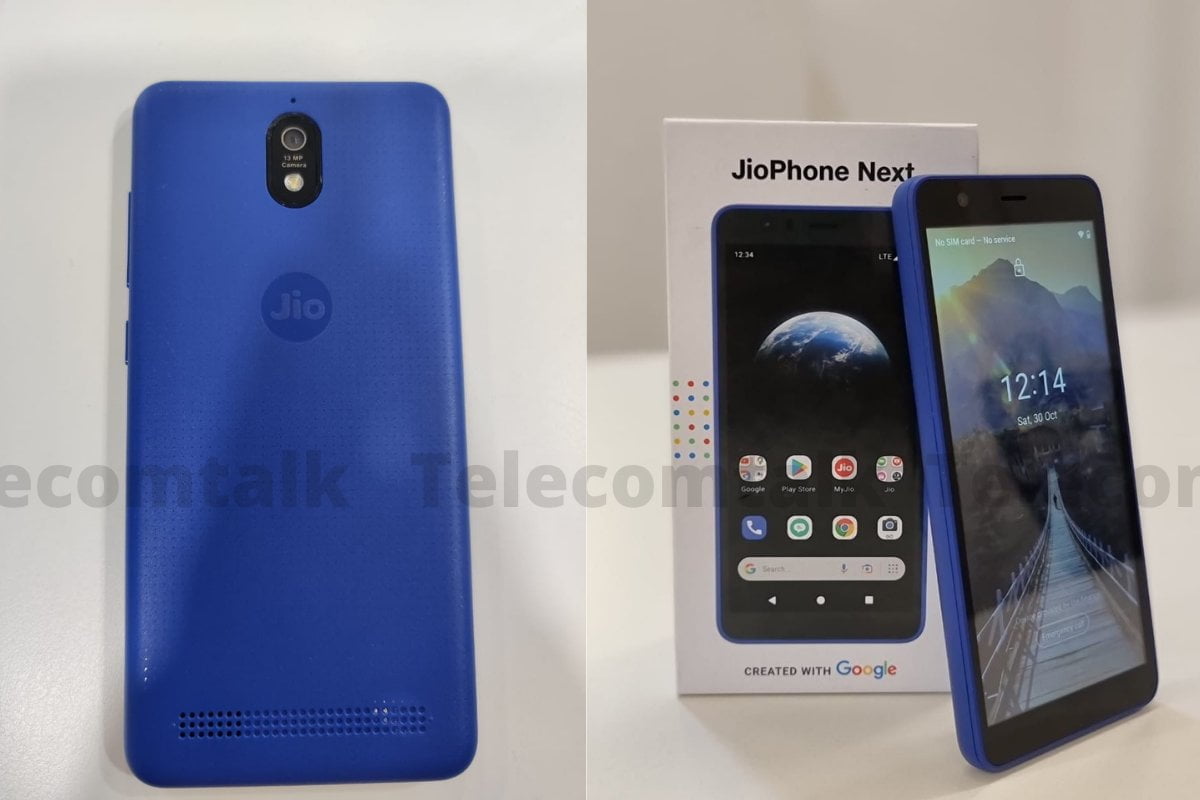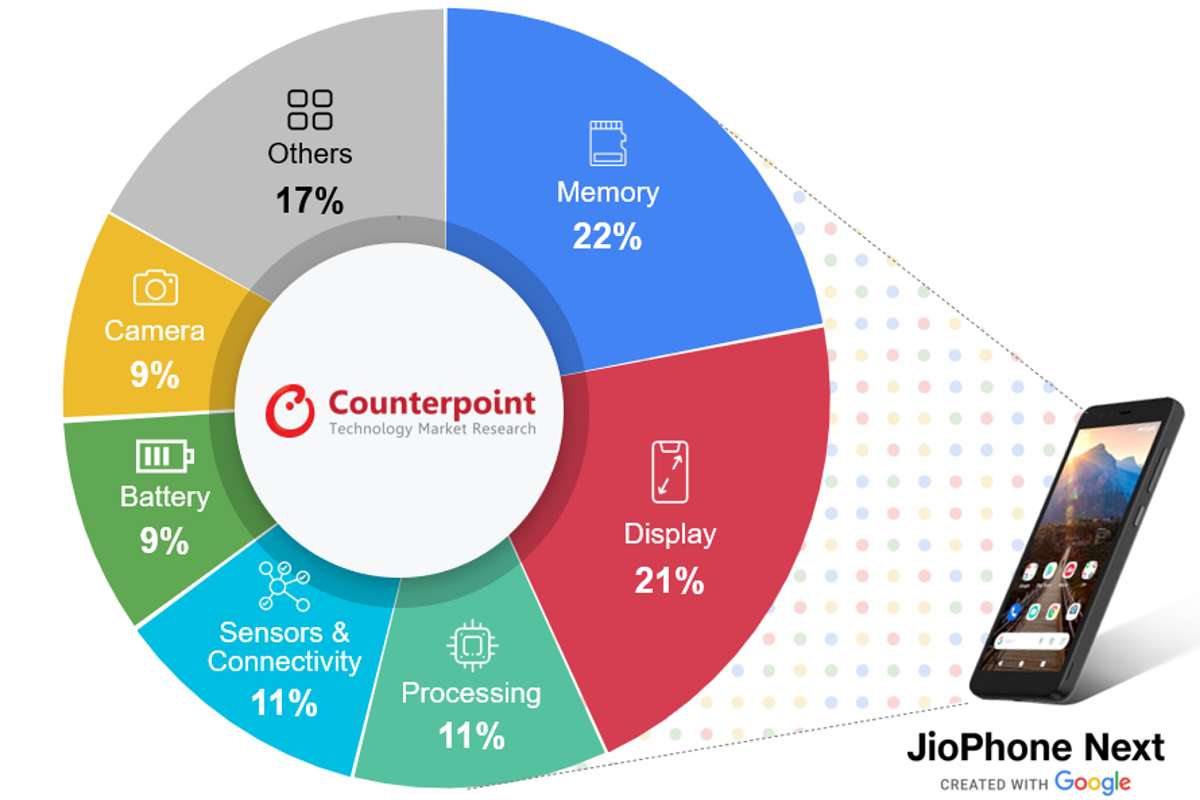Reliance Jio launched the super-affordable JioPhone Next, a 4G smartphone, to attract millions of 2G and 3G customers in India. The smartphone was a result of a partnership between Reliance Jio and search engine giant Google. The telco has worked hard to keep the Bill of Materials (BoM) of components costs around $58. Now, Counterpoint Research has shared the BoM and specification analysis which will help us understand how JioPhone Next is so affordable. Let’s take a look.
JioPhone Next BoM Analysis
Display - The JioPhone Next comes with a 5.45-inch LCD display with a resolution of 720 x 1440 pixels running at 60Hz refresh rate. As per Counterpoint, the display is manufactured by an upstart Chinese supplier TXD. Jio has used cover glass from Corning (Gorilla Glass 3). The display, along with the cover glass, has the largest share of 21% of the total BoM cost. Storage and Memory - Jio has used eMCP (embedded Multichip package) solution due to space and power constraints on the PCB. eMCP combines NAND and DRAM to minimise latency and cut down on power consumption. 2GB of single-channel LPDDR3 SDRAM running at 672 MHz and 32GB of eMMC 5.1 flash is manufactured by Samsung, which accounts for about 22% of the total BoM cost. Processor - The device runs on Qualcomm QM 215 SoC produced on 28nm process node. It is a toned-down variant of the Snapdragon 425. The processor accounts for 11% of the total BoM cost. Note that this also includes the Neural Processing Unit (NPU) from Syntiant. The NPU helps with the always-on-listening feature and voice commands, and more. Camera - Jio has a single 13MP sensor at the rear and an 8MP sensor at the front. It accounts for 9% of the total BoM costs. Sensors and Connectivity - It has support for single-band Wi-Fi and Bluetooth 4.1 and has multiple sensors, including Proximity, Accelerometer and Ambient Light Sensor. The device also supports VoLTE, VoWiFi and dual SIM VoLTE, which is a good thing. This accounts for 11% of the total BoM costs. Battery - JioPhone Next has a 3400mAh battery with a micro USB port. It accounts for 9% of the total BoM costs.

